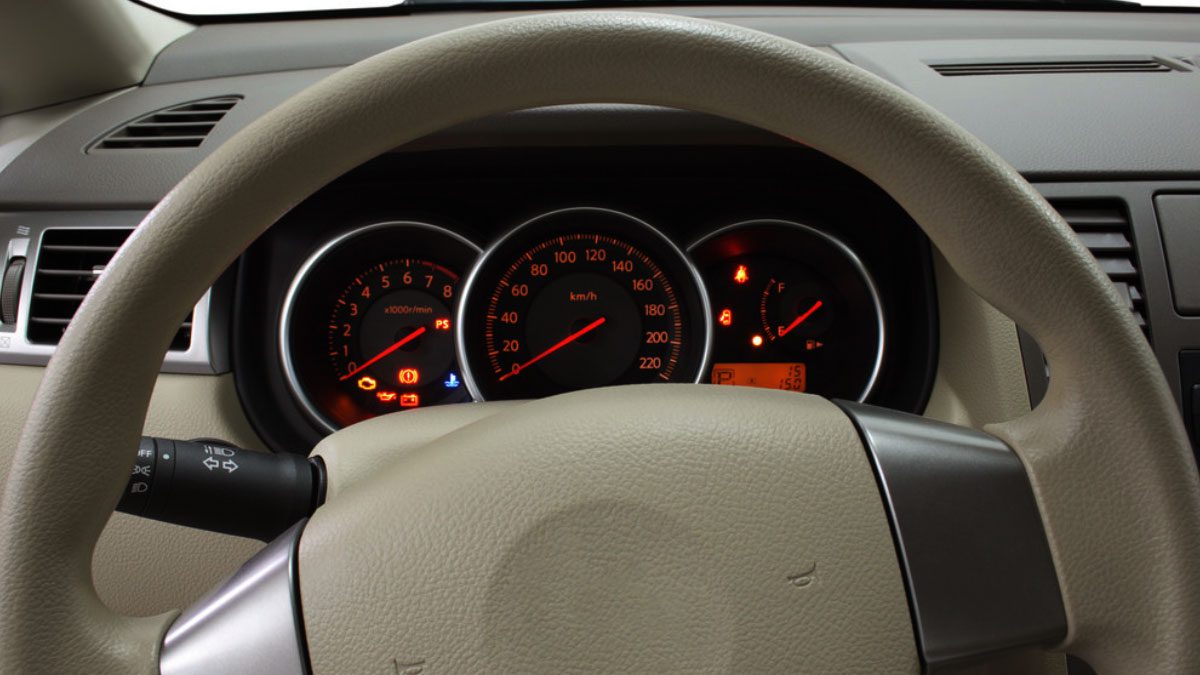Why Is My Oil Light On? 9 Reasons and Solutions
The oil light is one of the crucial warning lights on your vehicle’s dashboard. When it illuminates, it’s essential not to ignore it as it could indicate a potentially serious problem.
So, why is your oil light on? There are some common reasons that’s why your oil lights on like:
- Low oil level
- Faulty oil pressure sensor
- Oil pump failure
- Clogged oil filter
- Engine wear and tear
- Blocked oil passages
- Wrong oil viscosity
- Rapid temperature changes
- High engine RPM
In this comprehensive guide, we will delve into the reasons behind your oil light turning on, why it’s crucial to address this issue promptly, and what you can do to prevent it from happening in the first place.
Here Are 9 Common Reasons For The Oil Light Being On

When the oil light comes on in your vehicle, it is crucial to address it immediately to avoid serious engine damage. There are several common reasons why the oil light might be illuminated:
1. Low Oil Level
The most common reason for oil light illumination is a low oil level in the engine. This can happen due to oil leaks, burning oil, or neglecting regular oil changes.
2. Faulty Oil Pressure Sensor
Sometimes, the oil pressure sensor itself may be faulty, giving false readings. It causes the oil light to illuminate when there’s no actual problem with the oil pressure.
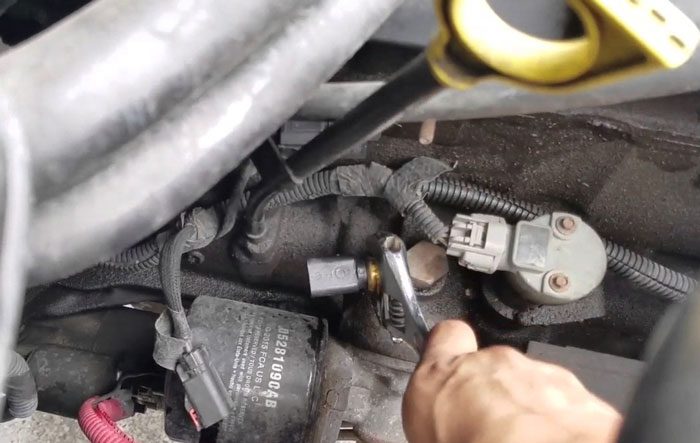
3. Oil Pump Failure
The oil pump is responsible for circulating oil throughout the engine. If it fails or becomes clogged, it can result in reduced oil pressure and the activation of the oil warning light.
4. Clogged Oil Filter
A clogged oil filter can obstruct the flow of oil to the engine, leading to low oil pressure and the illumination of the oil light.
5. Engine Wear and Tear
As engines age, internal components may wear out, causing increased clearances between parts. This can result in oil consumption and reduced oil pressure.
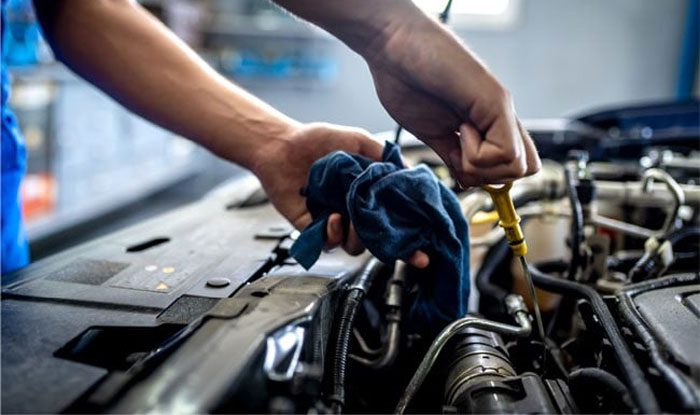
6. Blocked Oil Passages
Over time, sludge or debris can accumulate in the engine’s oil passages, hindering the smooth flow of oil. This can result in low oil pressure and the activation of the oil warning light.
7. Wrong Oil Viscosity:
Using the wrong type of engine oil or oil with the incorrect viscosity rating can lead to inadequate lubrication, which can trigger the oil light.
8. Rapid Temperature Changes:
Extreme temperature fluctuations can affect oil viscosity. If the oil becomes too thick in cold weather or too thin in hot weather, it can impact oil pressure.
Also, the coolant level of the engine may decrease, or there may be an issue with the thermostat.
Any of these reasons can cause rapid temperature changes in your car, and put the oil light on.

9. High Engine RPM:
Driving at high RPM (revolutions per minute) for extended periods can lead to increased oil consumption and reduced oil pressure, triggering the oil light.
Also, issues in the ECU can lead to high RPM even if there is no high consumption of oil.
How to Resolve Oil Light On Issue?

If the oil light on your car dashboard has come on, it’s essential to address the issue promptly to prevent potential damage to your engine. Here’s a step-by-step guide on how to resolve the oil light issue:
Pull Over Safely:
If the oil light comes on while you’re driving, the first step is to pull over to a safe location as soon as possible. Continuing to drive with low oil pressure can lead to serious engine damage.
Turn Off the Engine:
Once you’ve safely pulled over, turn off the engine. This will help prevent further damage to the engine components.

Inspect for Oil Leaks:
While you’re under the hood, inspect the engine for any signs of oil leaks. Leaks may appear as visible oil spots or wet areas around gaskets, seals, or the oil pan. If you discover a leak, it’s advisable to have it repaired by a professional mechanic.
Check the Oil Level and Add:
Open the hood of your car and locate the oil dipstick. Carefully pull it out, wipe it clean with a cloth, reinsert it, and then remove it again. Check the oil level. If the oil level is below the MIN level on the dipstick, you must add oil.
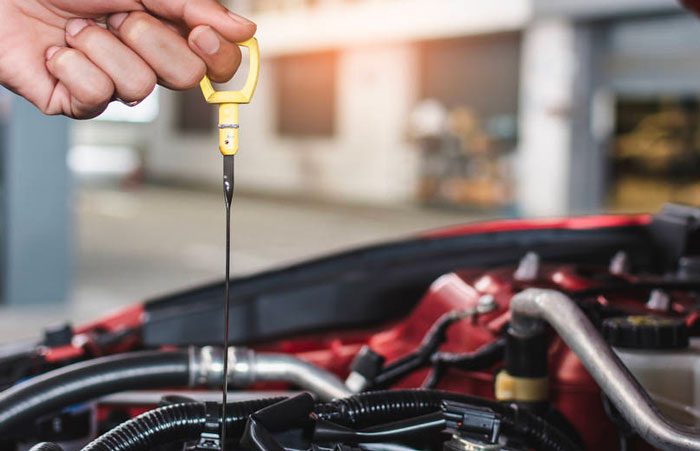
Check Oil Filter:
A clogged or dirty oil filter can also lead to low oil pressure. If it’s been a while since you changed the oil and oil filter, consider replacing them.
Check and Fix the Faulty Pressure Sensor
Compare the oil level of the dipstick and check what the oil pressure sensor reading is. If the dipstick shows the oil level is okay, but the sensor reading doesn’t match it, the fault is in the sensor. So, please replace the oil pressure sensor then.
Repair the Engine Wear and Tear
This wear and tear can be caused by factors such as high mileage, poor maintenance, or even extreme driving conditions. To resolve this issue, you may need to perform an engine repair or replacement.
This could involve replacing worn-out parts, fixing leaks, or even overhauling the entire engine if necessary. I suggest you consult a professional auto mechanic for engine issues.
Check and Clean the Blocked Oil Passages
Inspect your engine for blockages using specialized equipment like borescopes. Also, check the exhaust pipe to see if it is dirty, the engine is sputtering, or there is metallic noise inside the engine.
Flush-out additives that remove sludge buildup effectively. After flushing out the sludge along with the old oil, refill the oil.
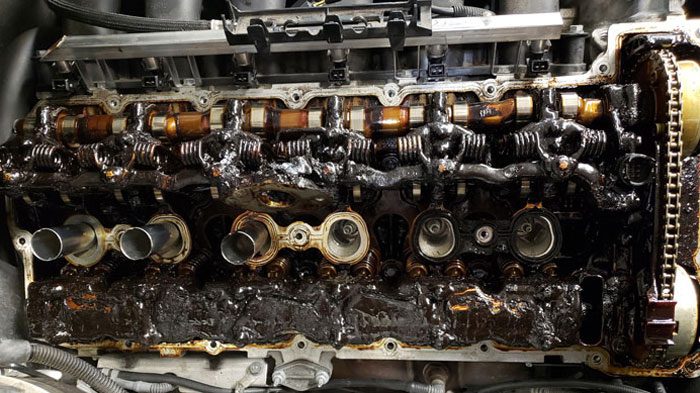
Use the Right Viscosity
Use the right viscosity of oil. Consult your car’s manual.
Fix the Temperature Issue
In very hot weather, I suggest not driving your car if it is not urgent. On the other hand,
- Check for the coolant leak. You may get a sweet smell. Fix the leak, and add coolant to the engine.
- Check for physical wear and tear in the thermostat. If it wears, replace it.
Fix the High Engine RPM
- Don’t drive your car at a high RPM for an extended period.
- Check for ECU issues. Overheating the ECU, loss of spark, and engine turning off for no reason are other symptoms of a faulty ECU. If the ECU is faulty, you have to replace it. Take professional help for the ECU fault.
How to Prevent The Oil Light From Coming On?

The oil light typically illuminates when there is a problem with oil pressure or oil levels. Here are some steps you can take to prevent the oil light from coming on:
- Regularly check for the oil level. If it starts to decrease, refill it.
- Always use the right viscosity of oil.
- Don’t drive a car with high RPM for a long time.
- Pause driving your car in extreme hot weather.
- Regularly clean the oil passage and oil filter to keep the oil supply at smooth inside the engine.
- Drive Responsibly
- Avoid Overloading
- Use Quality Oil Filters
FAQs
Here we attached some common questions:
It’s not advisable to drive with the oil light on, as it indicates potential engine problems. Pull over safely and address the issue.
It is generally recommended to check your engine oil level at least once a month. Regularly checking your engine oil is important as it helps ensure that your engine is properly lubricated and running smoothly.
No, you cannot use any type of engine oil in your car. Different engines have different requirements, and using the wrong type of oil can lead to serious damage.
If you hear unusual engine noises when the oil light is on, immediately turn off the engine and seek professional help to avoid further damage.
Conclusion
Understanding why your oil light is on is crucial for maintaining the health and longevity of your car. Whether it’s a simple fix like adding more oil or a more complex issue that requires professional attention, taking immediate action is key to preventing further damage.
Regularly checking your oil levels and staying vigilant for any warning signs can help you identify potential problems early on. Remember, neglecting your oil maintenance can lead to costly repairs or even engine failure.

